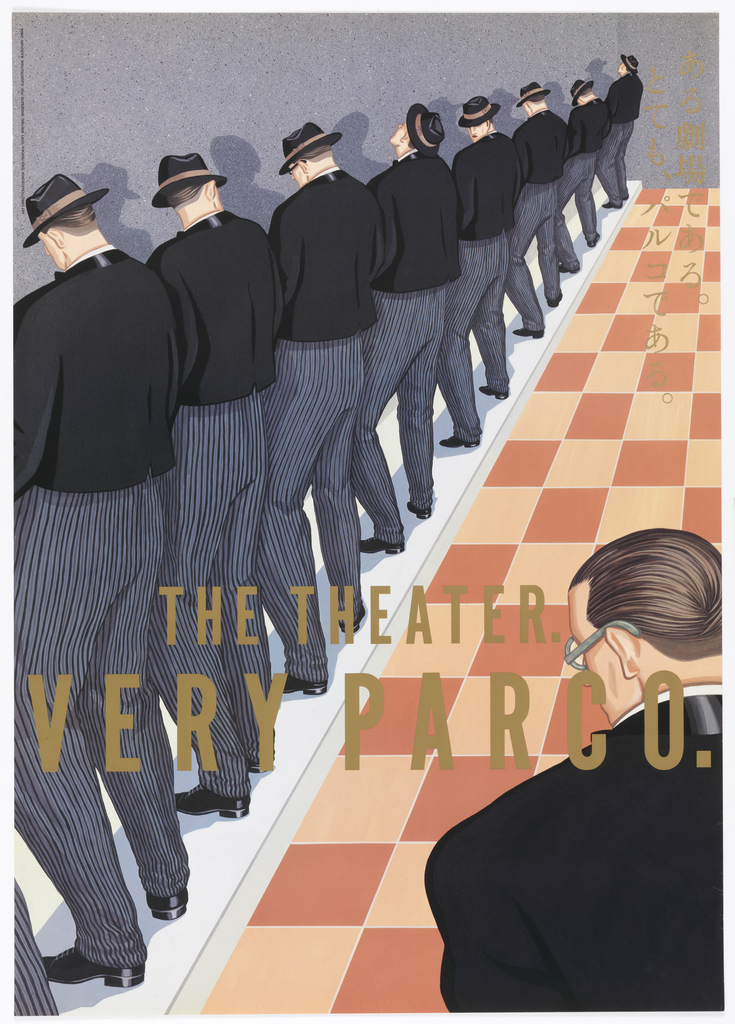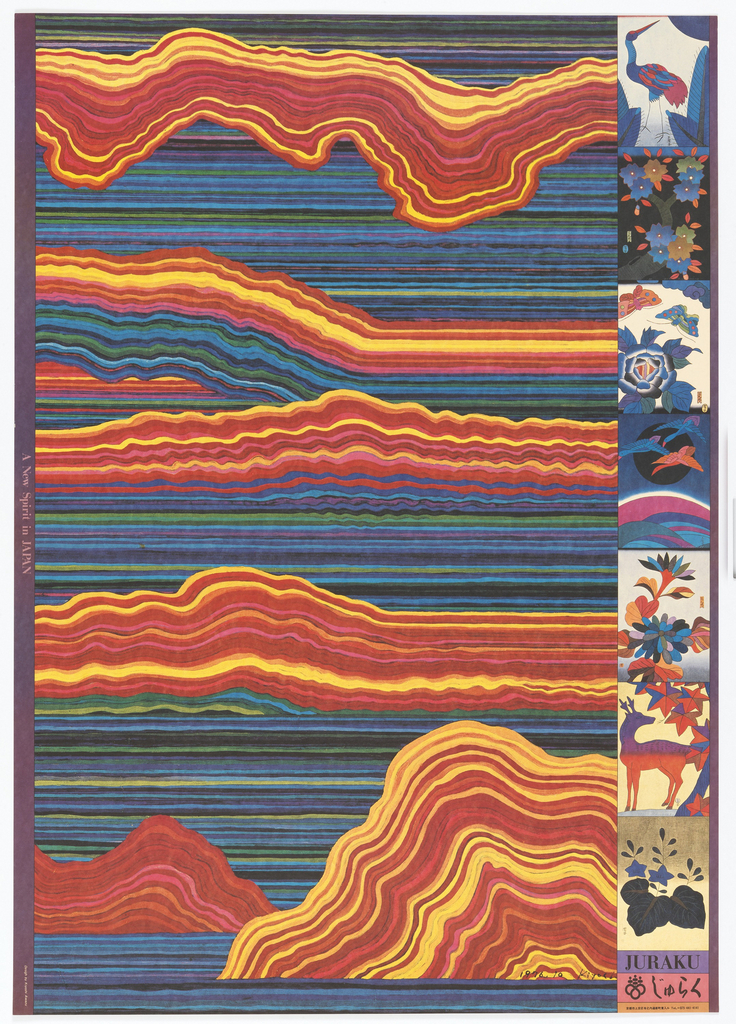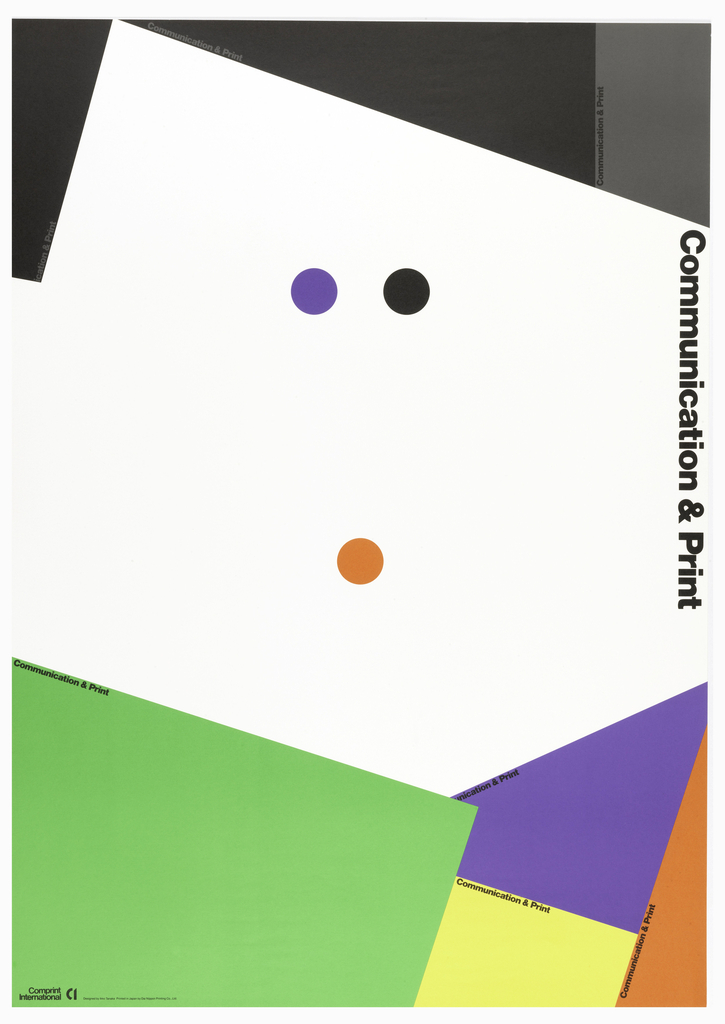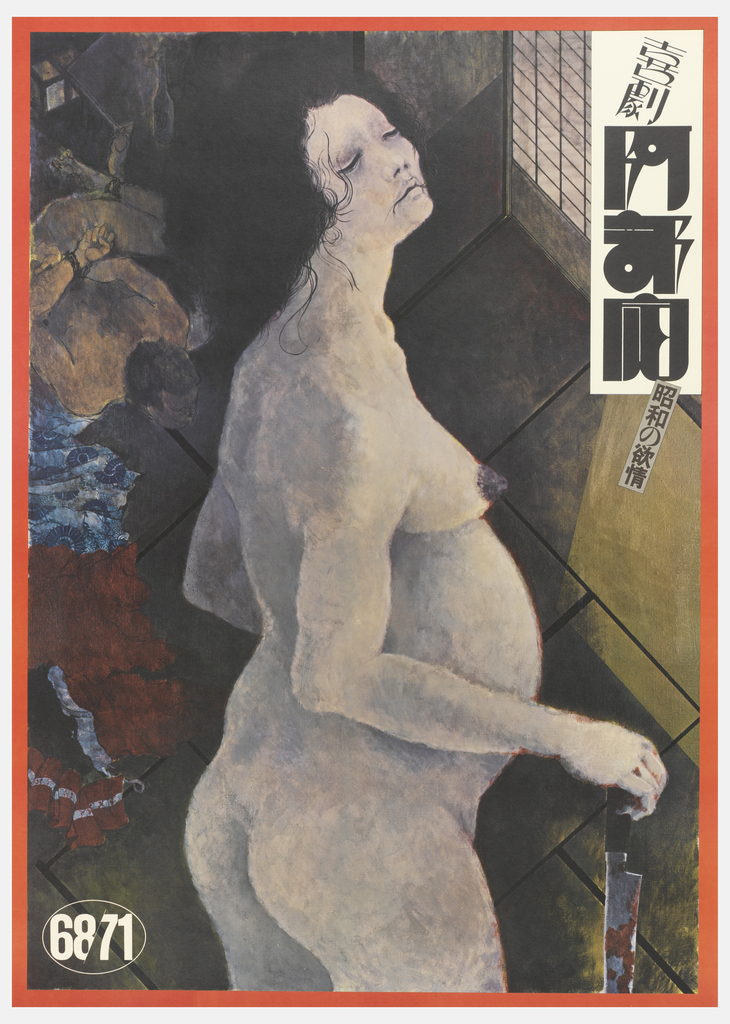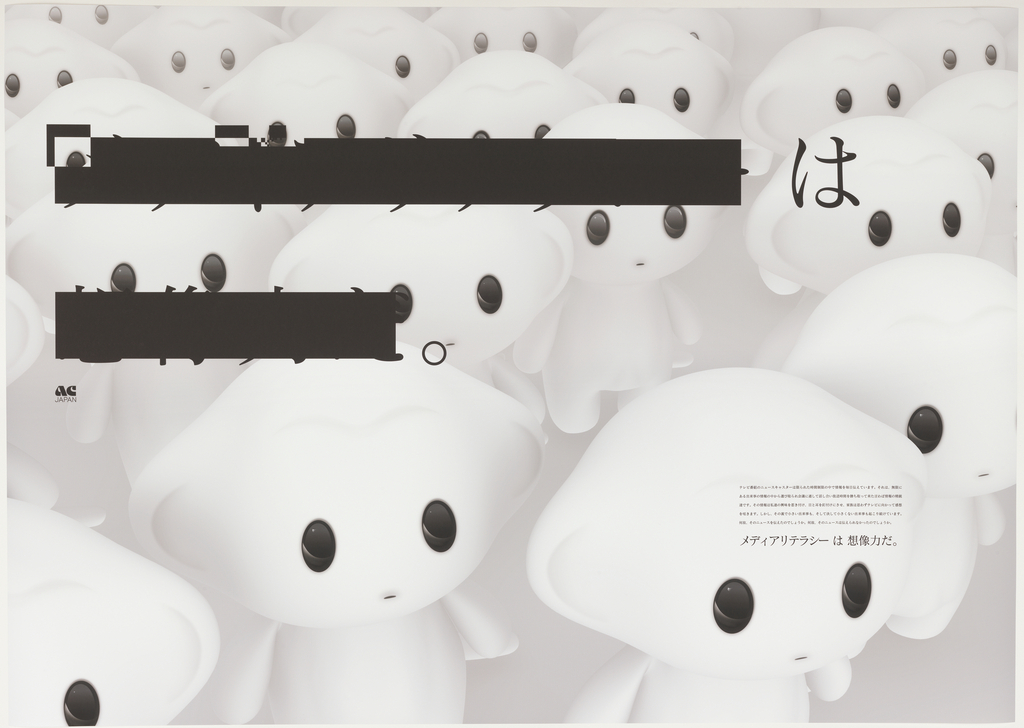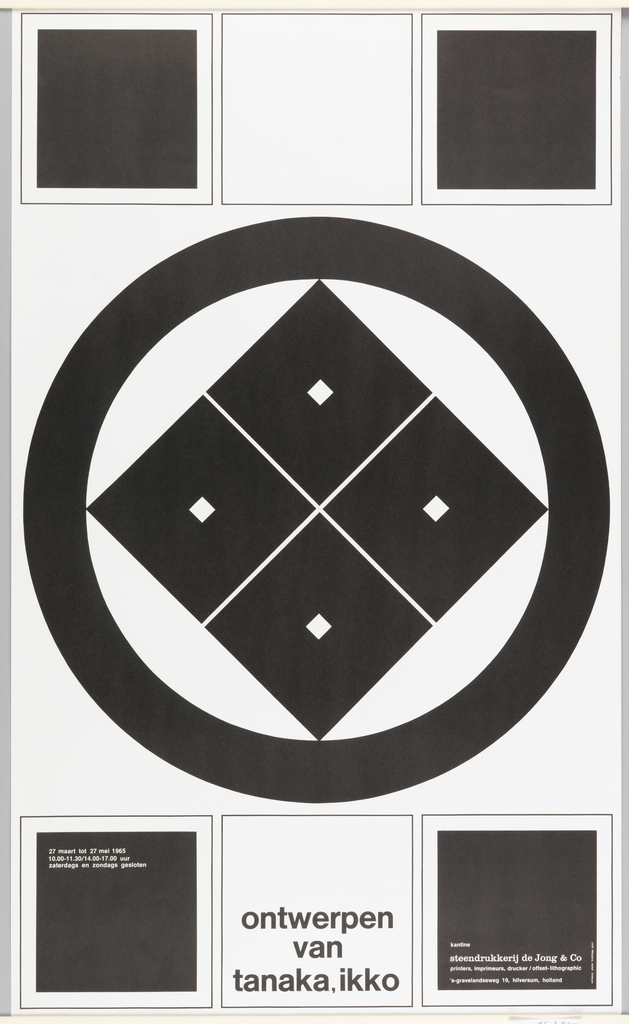Before turning his attention to graphic design in the mid-1960s, Tadanori Yokoo (b. 1936) first trained as a painter and worked as a stage designer for avant-garde theater productions in Tokyo. By the late 1960s, however, he was best known as a graphic designer. His work drew international acclaim when it was included in the...
In celebration of Women’s History Month, March Object of the Day posts highlight women designers in the collection. Today’s blog post was written by Kristina Parsons and originally published on March 17, 2014. Eiko Ishioka was a prolific and revolutionary designer. She contributed enormously to the fields of art direction, graphic design, production, as well as costume...
When it comes to Japanese graphic design, a certain set of visual elements are conjured in one’s mind. Simplified forms; a minimal color palette, the generous use of negative space; an effective use of black; and unique lettering, are all characteristic elements that draw on the aesthetics of Zen culture, Japanese Buddhism, calligraphy, ukiyo-e woodblock...
The Japanese graphic designer Ikko Tanaka is recognized as a pioneer of modern Japanese graphic design. He merged western modernist aesthetics and Japanese tradition to generate a new visual expression for contemporary audiences. Tanaka’s frequent use of geometric forms and a limited color palette is clear evidence of his strong respect for the Bauhaus, the...
This is a poster for a stage play called Abe Sada (阿部定) performed by a Japanese experimental theatre company called Black Tent Theatre in 1973. The story of the play is based on a true murder case that rocked Japan in 1936, a notorious crime that is the central focus of the poster. At first...
The week of August 6, 1945, United States armed forces dropped two atomic bombs on Japan; the first landed that Monday on Hiroshima, and another arrived three days later in Nagasaki. While the attacks seemingly worked in the allies’ favor, with Japan surrendering the following week, the fallout was devastating for the island nation–it is...
For her poster campaign for the Ad Council of Japan on the theme “Media Literacy Is an Imagination,” Shiro Shita Saori turned to the classic Japanese proverb of the three wise monkeys, who embody the maxim “See no evil, hear no evil, speak no evil.” This poster plays on the first element of the maxim,...
Born on today’s date in 1930, Ikko Tanaka was one of the giants of Japanese graphic design in the second half of the twentieth century. Tanaka began designing posters in 1954 and was renowned for his ability to synthesize both Japanese and Western aesthetics. His name became synonymous with straightforward, impressive designs recognizable for their...
![Poster for the 1968 exhibition at the Museum of Modern Art, “Word and Image: Posters and Typography from the Graphic Design Collection of the Museum of Modern Art, 1879–1967.” Across top margin in white text: WORD IMAGE WORD IMAGE WORD IMAGE [sic]. Below, on a black ground, four open mouths with pink lips, white teeth, and a red tongue arranged in a 2x2 grid. At bottom, red and blue rays emanate from a large, blue eye with a pink lid. Across bottom margin: THE MUSEUM OF MODERN ART, NEW YORK, JANUARY 24–MARCH 10 / DESIGNER TADANORI YOKOO COPYRIGHT © 1968 THE MUSEUM OF MODERN ART POSTER ORIGINALS LTD., NO. 89.](https://www.cooperhewitt.org/wp-content/uploads/2020/01/CHSDM-292887_01-000001-scaled.jpg)
